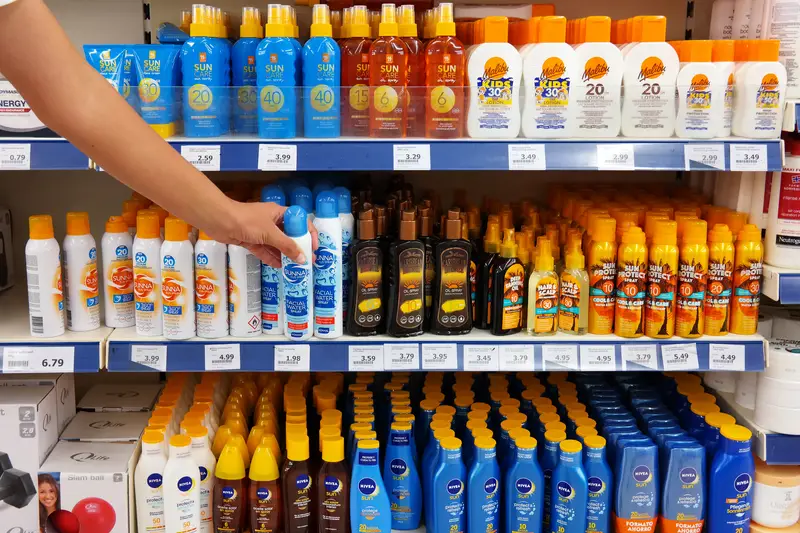Ever notice how your sunscreen leaves a white cast or feels sticky? It turns out Americans are missing out on better sunscreen options. While we think we’re getting the best protection, many other countries have access to newer, more effective ingredients that we can’t get here. The FDA hasn’t approved a new sunscreen filter since 1996, leaving us with fewer options than people in Europe, Asia, and Australia. What’s really in those bottles might surprise you.
Why American sunscreens fall behind global options
When you squeeze that tube of sunscreen before heading to the beach, you might not realize you’re using outdated technology. In the United States, sunscreen is regulated as a drug, not a cosmetic like in most other countries. This means new ingredients must go through years of testing and cost millions of dollars to get approved. Companies often don’t want to spend the money when they can sell their products everywhere else in the world without the extra hassle. That’s why when your friend brings back sunscreen from Japan or France, it feels nicer on your skin and doesn’t leave that ghostly white look.
The approval process in America is so slow that ingredients that have been safely used around the world for over 20 years still aren’t available here. Take bemotrizinol, for example – it’s been used in European sunscreens since 2000, but US companies have spent over $20 million trying to get it approved with no success. This means we’re stuck with older ingredients that often don’t provide the same level of protection against harmful UVA rays that cause skin cancer and premature aging. It’s like we’re driving a car from the 90s while the rest of the world zoomed ahead in newer models.
The difference between mineral and chemical filters
When you read sunscreen labels, you’ll see two main types of active ingredients: mineral (physical) and chemical filters. Mineral sunscreens use zinc oxide and titanium dioxide, which sit on top of your skin and reflect UV rays like tiny mirrors. These are the ones that often leave that white cast on your skin, especially if you have darker skin. They work right away after application, which is nice when you’re in a hurry to get outside. Many people who worry about chemical absorption choose these options, thinking they’re “more natural” – though remember, all ingredients are technically chemicals!
Chemical filters, on the other hand, work by absorbing UV rays and converting them to heat. In the US, we use ingredients like avobenzone, oxybenzone, and octocrylene. These usually blend better into the skin without leaving a white cast. But here’s the catch – many of these aren’t as stable or effective as the newer chemical filters used in Korean sunscreens. Some people avoid chemical filters because they’ve heard scary reports about them being absorbed into the bloodstream. But just because something can be detected doesn’t automatically mean it’s harmful – the FDA is just being extra careful, which explains why we have fewer options.
Those white marks aren’t necessary anymore
Remember the last time you applied sunscreen and ended up looking like a ghost in photos? That white cast comes from mineral filters, especially zinc oxide. While these ingredients are effective at blocking UV rays, they can be a real pain to use, especially for people with medium to dark skin tones. Many people skip sunscreen altogether because of this, which is way worse for your skin in the long run. The good news is that newer formulations available outside the US have figured out how to make these ingredients more wearable through better processing techniques and innovative formulations.
In Europe and Asia, sunscreens combine newer chemical filters with minerals in ways that eliminate the white cast problem while still providing excellent protection. They feel lighter on the skin and are more pleasant to wear every day. This is one reason why some Americans are looking overseas, ordering Japanese sunscreens online or asking friends to bring some back from trips abroad. Companies are working on improving US options too – some use nano-sized zinc particles or tinted formulas to reduce the white cast. But until the FDA approves newer ingredients, we’re stuck with fewer options that don’t work as well for everyone.
UVA protection is often inadequate in US sunscreens
When you check your sunscreen bottle, you’ll see an SPF number that tells you how well it protects against UVB rays – the ones that cause sunburn. But what about UVA rays? These sneak through clouds and windows and cause skin aging and cancer, even without a sunburn. US sunscreens don’t always have the best UVA protection. In fact, many American sunscreens would fail the stricter UVA requirements in places like Europe and Japan. In those countries, sunscreens provide a more balanced protection against both types of rays, which is why they tend to work better at preventing long-term skin damage.
Foreign sunscreens often include ingredients like Tinosorb S, Tinosorb M, and Mexoryl SX that provide superior UVA protection. These ingredients have been used safely for decades outside the US but remain unavailable to Americans because of our regulatory process. European sunscreens use a “PA” rating or a UVA circle symbol that tells you exactly how good the UVA protection is. US sunscreens just say “broad spectrum” with no details about how much UVA protection they actually provide. This means that when you buy a broad spectrum sunscreen in America, you might not be getting the full protection you think you are.
The sunscreen ingredients raising safety questions
You might have seen headlines about sunscreen ingredients getting into your bloodstream. In 2019, the FDA found that common chemical filters like oxybenzone, octinoxate, octisalate, and avobenzone can be absorbed through the skin at levels higher than previously thought. This doesn’t automatically mean they’re unsafe, but it has raised questions about long-term effects. Some studies suggest that oxybenzone might affect hormones, but the evidence isn’t strong enough for a definite conclusion. This uncertainty has led many people to switch to mineral sunscreens, even though they can be less comfortable to wear.
The FDA is now asking for more safety data on these ingredients, which is good for consumer safety but has created confusion in the market. In contrast, the newer ingredients used in international sunscreens have already gone through extensive safety testing in other regions and have proven track records. For example, Tinosorb S has been used safely in international sunscreens for over 20 years. The irony is that because US testing requirements are so stringent and expensive, we end up with fewer well-tested options, while consumers in other countries benefit from a wider range of effective and safe ingredients.
How other countries test sunscreen differently
Sunscreen testing isn’t the same everywhere in the world. In the US, the FDA requires animal testing for new sunscreen ingredients, which is both expensive and controversial from an ethical standpoint. This is one big reason why new ingredients aren’t making it to the American market. Other countries have moved beyond animal testing to more modern methods like lab-grown skin models and computer simulations that can predict how ingredients will interact with skin. These methods are often more accurate than animal tests and don’t have the ethical problems.
Another difference is how they test for water resistance and UVA protection. US tests might not reflect real-world conditions as well as testing in other countries. For example, European sunscreens use the “Critical Wavelength” method and a UVA-to-UVB ratio requirement to ensure balanced protection. This means that French sunscreen you bought on vacation might actually work better during swimming or sweating than your American one, even if they have the same SPF number. Congress has tried to address this by passing laws like the Sunscreen Innovation Act in 2014, but progress has been slow, leaving American consumers with fewer options.
What makes foreign sunscreens feel better on skin
Have you ever tried a sunscreen from Korea or Japan and wondered why it feels so much nicer than American ones? It’s not just the active ingredients – it’s also the inactive ingredients that affect how the product feels and looks on your skin. Foreign sunscreens often use more modern formulation techniques that make them lighter, less sticky, and faster to absorb. They tend to use different types of silicones, alcohols, and emollients that leave your skin feeling soft instead of greasy. This makes a huge difference in whether people actually want to use sunscreen every day.
Many Asian beauty sunscreens also add skincare ingredients like hyaluronic acid, niacinamide, or antioxidants that provide extra benefits beyond sun protection. These formulations are often called “cosmetically elegant” because they work well under makeup and don’t pill or roll off the skin when you rub them in. US companies try to improve their formulas too, but they’re limited by the approved active ingredients they can use. The good news is that more American brands are starting to pay attention to texture and feeling, even within their limitations, so we’re seeing some improvements in newer products on US shelves.
How to choose the best sunscreen available to you
So with all these limitations, how do you pick a good sunscreen? First, look for broad-spectrum protection with SPF 30 or higher. This ensures some level of protection against both UVB and UVA rays. If you have darker skin and hate the white cast, chemical sunscreens might work better for you. For sensitive skin, mineral options with zinc oxide and titanium dioxide are less likely to cause irritation. Remember that the best sunscreen is the one you’ll actually use consistently – so find one with a texture you don’t mind wearing every day.
Consider your activities too – if you’re swimming or sweating, look for water-resistant formulas. Some US brands are creating innovative products despite the limitations. Brands that focus on clean beauty sunscreen options often put extra effort into formulation to make their products more wearable. If you’re really interested in trying international options, you can find them online, though be aware they may not have gone through FDA review. Whatever you choose, apply enough (about a shot glass full for your body) and reapply every two hours when outdoors for the best protection.
While American sunscreens might not have all the advanced ingredients found elsewhere, they still provide essential protection against UV damage. The good news is that change may be coming. The FDA is working on updating regulations, and Congress has introduced bills to modernize testing requirements. Until then, find a sunscreen you like enough to use every day – because even a slightly less perfect sunscreen that you actually wear is infinitely better than the “perfect” one sitting unused in your bathroom drawer.

